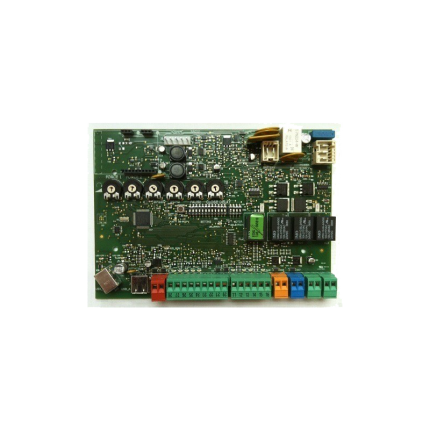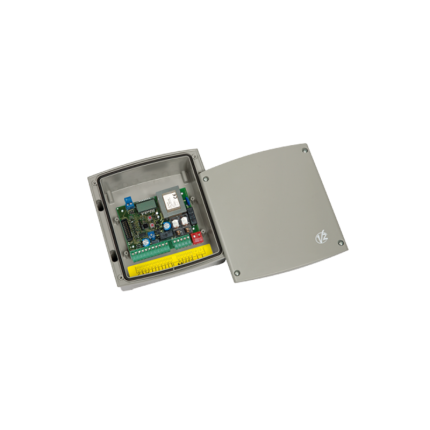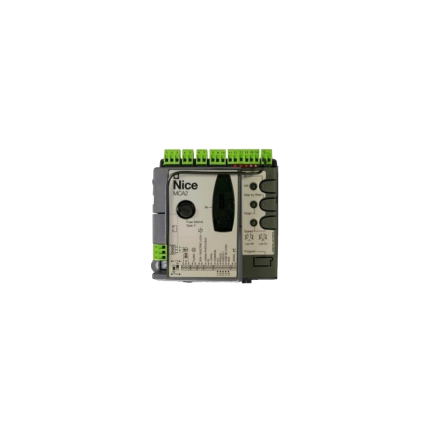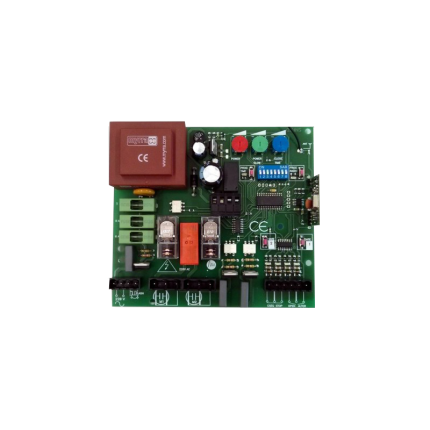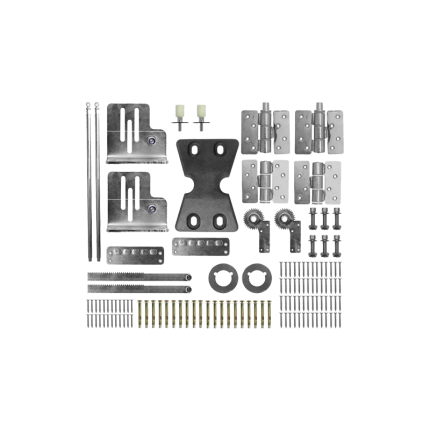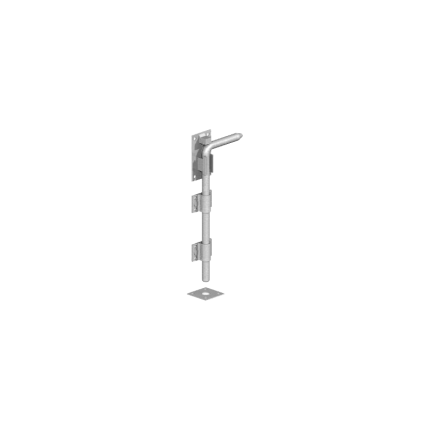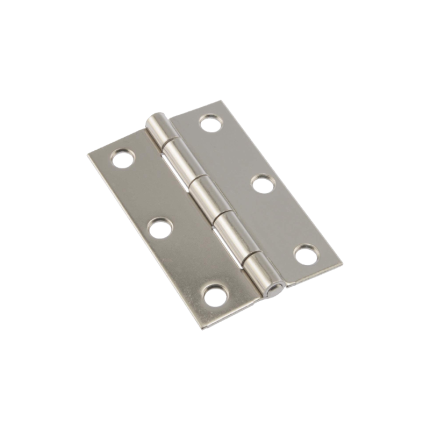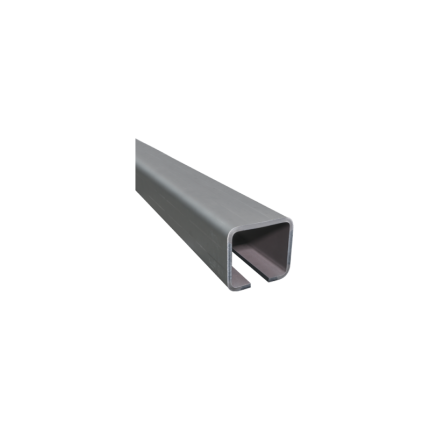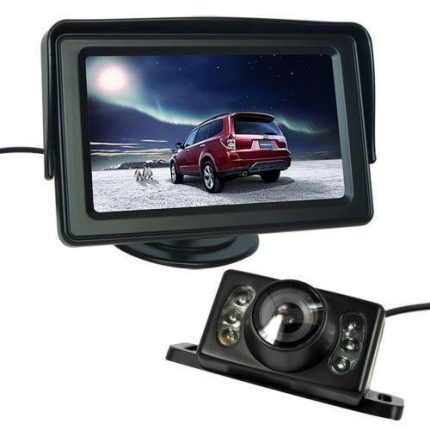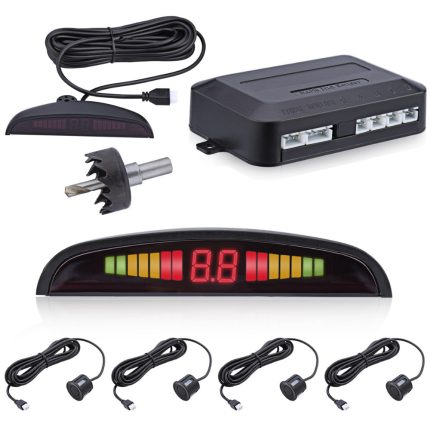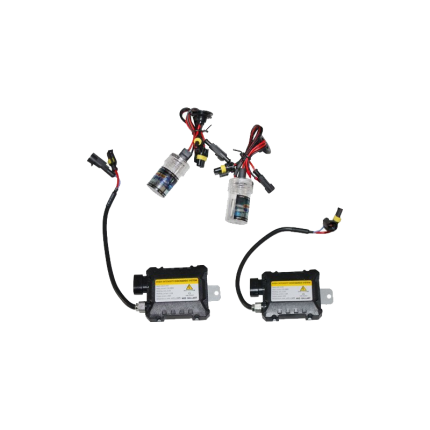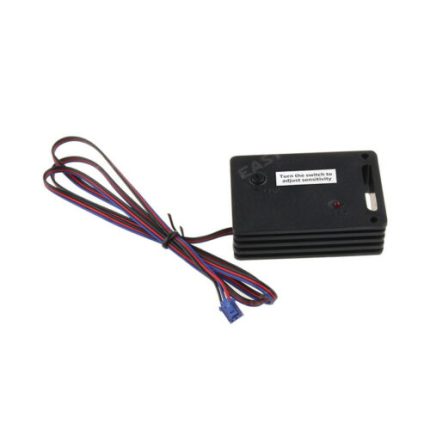Shop
Swing gate operator main control board – VDS (Underground RG24)
Ship or pick up from our office.
Swing gate operator main control board – VDS (Underground RG24)
The swing gate operator main control board for the VDS Underground RG24 is a key component that manages the operation of the gate.
It receives power, processes signals from remote controls and safety devices, and controls the movement of the underground actuator arm to open and close the gate.
The swing gate operator main control board is designed to be fully programmable and compatible with the VDS RG24 underground electromechanical motor, typically with 120V input power.
Here's a more detailed explanation about swing gate operator:
-
Function:The main control board acts as the "brain" of the gate operator system. It receives input from various devices (like remote controls, safety sensors, etc.) and sends appropriate signals to the motor to control the gate's movement.
-
Power Input:The VDS Underground RG24 swing gate operator main control board typically requires a 120V AC input power supply.
-
Programming:It's fully programmable, meaning it can be configured to work with different gate types, safety features, and operational modes.
-
Compatibility:It's designed specifically for the VDS RG24 underground electromechanical motor.
-
Components:The VDS RG24 system typically includes the underground actuator arm and a separate control box that houses the main control board.
-
Safety Features:Modern control boards often include safety features like anti-crushing detection and slowdown capabilities to prevent accidents.
-
Optional Features:Many control boards can be integrated with optional features like battery backup, remote controls, and safety sensors.
Swing gate operator main control board – V2
Ship or pick up from our office.
Swing gate operator main control board – V2
The Swing gate operator main control board V2, often referred to as the CALYPSO board, is a crucial component for swing gate automation systems.
It serves as the central hub for controlling the gate's movement, receiving commands from remote controls or other accessories, and directing the gate motor to open or close.
Specifically, this board is designed for use with the VDS underground electromechanical motor and is compatible with gates weighing up to 500 kg.
Key Features and Functions:
-
Central Control:The V2 board acts as the brain of the gate system, receiving signals from various inputs like remote controls or keypads.
-
Signal Processing:It interprets these signals to determine the appropriate action for the gate motor, whether to open, close, or stop.
-
Motor Activation:The board sends instructions to the gate's motor, initiating the opening or closing cycle.
-
Adjustable Settings:It allows for customization of parameters like gate speed, opening and closing times, and safety features.
-
Safety Mechanisms:Many control boards also manage safety features like photo eyes and safety loops, ensuring the gate stops if an obstruction is detected.
-
Communication:It enables communication between the gate motor, safety sensors, and other accessories.
-
Programmability:The board is often programmable, allowing for customization of features and functionality.
-
Compatibility:The V2 board is designed for use with various swing gate operators, including those from LiftMaster and other brands.
In essence, the V2 control board is the central processing unit for your swing gate, ensuring smooth, safe, and reliable operation.
Swing gate operator main control board – NICE
Ship or pick up from our office.
Swing gate operator main control board – NICE
Nice (formerly also Nice Apollo) offers a range of control boards for their swing gate operators, each with specific features and compatibilities. These control boards are the "brain" of the gate system, managing motor functions, safety features, and access control. Here are some of the prominent Nice swing gate operator main control boards and their general characteristics: Common Nice Control Board Models and Features for the swing gate operator:- Nice Apollo 1050US (and 1050i):
- Features: This is a popular and advanced control board. It typically includes an LCD display for easy programming and diagnostics, a 7-day programmable event timer, and an innovative obstacle detection system. It's designed for seamless integration with a wide array of Nice Apollo gate operators.
- Compatibility: Compatible with various Nice Apollo models, including swing gate openers like the Apollo Linear Actuators, Titan Linear Actuators, and Vanguard 3501. The "US" version (1050US) is UL325 2018 compliant, requiring monitored safety devices, while the "i" version (1050i) does not require them, making it suitable for regions with different safety compliance standards.
- Power: Supports solar, AC power, and backup battery systems.
- Connectivity: Often includes a built-in receiver for remote transmitters and is compatible with Nice BlueBUS safety devices.
- Nice Apollo Mercury 310 (MX4920):
- Features: UL 325 7th Edition compliant with built-in force entrapment protection. It features a solar battery charge controller with MPPT for optimized energy use and plug-and-play functionality.
- Compatibility: Integrated with Nice BlueBUS and OXI accessories, and supports residential linear swing gate actuators.
- Nice Apollo 636:
- Features: Dual 12VDC control for swing and slide gate openers, with obstacle detection and force monitoring for enhanced safety. It integrates BlueBUS for simplified wiring of monitored safety devices and has a programmable dual-gate delay and auto-close. LED feedback aids in diagnostics.
- Compatibility: Works with Apollo Linear Actuators (e.g., Apollo 1500, 1600).
- Nice SmartCNX:
- Features: Designed for modern automation with wireless and cloud connectivity. Offers advanced diagnostic tools for real-time monitoring and troubleshooting.
- Compatibility: Fully compatible with BlueBUS and plug-in safety devices. Customizable settings for motor speed, force, and cycle timing. Works with AC, solar, and battery backup.
- Nice Mindy Series (e.g., A60, A6F, A700f, A824, A924):
- Features: These are older or more specialized control panels, often featuring pull-out terminals, multiple photocell inputs, and microprocessor logic. Some are 24V versions with encoders for precise control.
- Functionality: Offer features like obstacle detection, auto-programming, and self-diagnosis systems.
Swing gate operator main control board – Zero
Ship or pick up from our office.
Swing gate operator main control board - Zero
The "Zero" swing gate operator's main control board is a programmable, multifunctional control unit for swing gates, often used with VDS underground electromechanical motors.
It acts as the "brain" of the system, managing all gate operations and receiving signals from various input devices.
Key features and functions of the Zero swing gate operator's main control board:
-
Central Control:It manages all aspects of the gate operation, acting as the central hub for signals and commands.
-
Signal Processing:Receives signals from remote controls, keypads, safety sensors, and other input devices.
-
Motor Activation:Based on the input received, it sends instructions to the gate motor to open or close the gate.
-
Adjustable Settings:Allows for customization of gate speed, opening/closing times, and safety features.
-
Safety Features:Implements security protocols like locking mechanisms and safety features.
-
Internal Receiver:Many models have a built-in radio receiver for remote control operation, often operating at 433 MHz.
-
Power Supply:Typically operates with a specific voltage input, such as 120V or 24V DC, and may have an output for powering accessories.
-
Compatibility:Some models are designed for universal compatibility with various swing gate openers and systems.
-
Battery Backup:Some models offer battery backup for continued operation during power outages.
-
Other features:May include features like quick close, soft start/stop, and anti-tailgate functions, depending on the specific model.
Bi-Folding Gate Hardware
Ship or pick up from our office.
Bi-Folding Gate Hardware
Bi-folding gate hardware refers to the mechanical components and accessories used to construct and operate gates that fold in half when opening, allowing for more efficient use of space.These components include hinges, rollers, pivots, guides, and other necessary parts that enable the gate to fold and unfold smoothly.
Key Components and Features:
-
Hinges:These are crucial for the folding action, connecting the gate leaves and allowing them to pivot.
-
Rollers and Guides:These components ensure smooth and stable movement of the gate along a track or within a frame.
-
Drop Bolts:These secure the gate in the open or closed position, providing stability and preventing unwanted movement.
-
Handles:These are used to manually operate the gate.
-
Specialized Mechanisms:Some systems utilize geared hinges or other mechanisms to ensure smooth and reliable operation, especially for larger gates.
Benefits of Bi-folding Gates:
-
Space Saving:Bi-folding gates require less space to open compared to traditional swinging gates, making them ideal for areas with limited space.
-
Versatility:They can be used with gate automation systems and are suitable for various gate sizes and configurations.
-
Enhanced Accessibility:Bi-folding gates provide easy access to enclosed spaces without obstructing parking or other areas.
-
Improved Aesthetics:They can be designed with various styles and finishes to complement the overall aesthetic of the property.
-
Cost-Effective:Bi-folding gates can be more cost-effective to automate than traditional double swing gates as they require fewer operators.
Applications:
- Residential driveways where space is limited.
- Commercial and industrial properties requiring secure access.
- Areas with challenging terrain, such as those with gravel surfaces.
- Condominiums and other multi-unit dwellings.
Gate drop ground latch
Ship or pick up from our office.
Gate drop ground latch
A gate drop ground latch, also known as a cane bolt or drop rod, is a hardware mechanism used to secure a gate in either the open or closed position by inserting a rod into the ground.
It's commonly used for single or double gates, including wooden fences, metal gates, and even barn doors, to provide extra stability and prevent unwanted movement.
Here's a more detailed explanation:
How it works:
- The latch typically consists of a rod (the "drop rod" or "cane bolt") and a bracket or receiver that is mounted on the gate.
- When the gate is in the desired position (open or closed), the rod is manually lowered through the bracket and into a hole or receiver in the ground.
- This creates a secure hold, preventing the gate from swinging or being moved by wind or other forces.
- Some designs include a bracket or keeper to hold the rod in the raised (open) position when not in use.
Common uses:
- Securing single or double gates: The drop ground latch can be used on both types of gates to keep them firmly in place.
- Providing stability in windy conditions: It helps prevent gates from being blown open or closed by the wind.
- Securing gates in the open position: It can be used to hold a gate open, preventing it from accidentally closing.
- Reinforcing gate security: It adds an extra layer of security, making it more difficult to force the gate open.
- Suitable for various materials: Can be used with wood, metal, and other gate materials.
Benefits:
- Enhanced security: Prevents gates from being moved by wind or other forces.
- Increased stability: Helps keep gates aligned and prevents sagging.
- Versatile application: Can be used on a variety of gates and in different environments.
- Easy to operate: Simple manual operation to engage and disengage the latch.
- Relatively easy to install: Usually requires drilling holes for mounting the brackets.
Pedestrian Gate Hinges
Ship or pick up from our office.
Pedestrian Gate Hinges
Pedestrian gate hinges are designed to allow a gate intended for pedestrian use to swing open and closed, connecting the gate to its post or frame.
These hinges are crucial for the smooth operation and secure closure of the gate, ensuring proper alignment and functionality. They can be surface-mounted, bolt-on, or weld-on, and may include features like spring-assist or adjustable tension for self-closing.
Here's a more detailed breakdown:
-
Function:Pedestrian gate hinges primarily serve to join the gate to its supporting structure (post or frame) and allow for rotation.
-
Types:They can be surface-mounted, bolt-on, or weld-on, offering different installation methods.
-
Features:Some hinges incorporate self-closing mechanisms, like spring-assist or adjustable tension, which can be important for safety or convenience.
-
Materials:They are commonly made from steel, stainless steel, or polymer, ensuring durability and resistance to the elements.
-
Applications:Pedestrian gate hinges are suitable for various settings, including residential, HOA, and commercial properties, especially for side gates, walkways, and restricted access enclosures.
-
Considerations:When choosing hinges, factors like the gate's weight, size, and desired functionality (e.g., self-closing) should be taken into account.
Cantilever sliding gate track
Ship or pick up from our office.
Cantilever sliding gate track
A cantilever sliding gate track with aluminum material is a specific type of gate system designed for smooth, overhead operation without needing a track embedded in the ground. Here's a breakdown: Understanding Cantilever Gates First: Traditional sliding gates often have wheels that roll on a track set into the driveway or ground. Cantilever gates are different. They "cantilever" or hang over the opening, supported by a set of rollers or carriages mounted on posts outside the gate opening. The gate itself has a longer "tail" section that acts as a counterbalance, allowing the main gate panel to span the opening without touching the ground. Key Components of a Cantilever System:- Gate Panel: The main part of the gate that opens and closes.
- Tail Section: An extended portion of the gate that balances the main panel and runs through the support posts.
- Track (often "C-channel" or similar profile): This is the crucial part that the carriages or rollers run inside. It's typically integrated into the gate frame itself, usually along the bottom or sometimes the top of the gate structure.
- Carriages/Rollers: These are assemblies with wheels (often nylon or sealed bearings) that are securely mounted to the support posts. The gate's track slides over these carriages, allowing the gate to move.
- Guide Rollers/Posts: Additional rollers or posts that keep the gate upright and guide its movement at the top.
- Receiver Post: Where the gate latches or receives when fully closed.
- Lightweight: Aluminum is much lighter than steel, which reduces the overall weight of the gate. This makes it easier for the gate operator (motor) to move the gate, potentially extending the operator's lifespan and reducing energy consumption.
- Corrosion Resistance: Aluminum naturally forms a protective oxide layer, making it highly resistant to rust and corrosion. This is a major benefit, especially in areas with high humidity, rain, or salt, like coastal regions or places with harsh winters (relevant for Surrey, BC). Steel tracks often need galvanization or regular painting to prevent rust.
- Durability: Despite being lightweight, aluminum alloys (like 6061-T6 or 6005-T5, commonly used in gates) are very strong and durable, capable of handling significant loads and regular use.
- Low Maintenance: Due to its corrosion resistance, aluminum tracks require very little maintenance in terms of rust prevention. General cleaning to remove debris is still recommended.
- Aesthetics: Aluminum can be finished in various ways, including powder coating in different colors, or left with a natural mill finish. This allows for greater design flexibility to match the property's aesthetics.
- Ease of Fabrication and Installation: Aluminum is easier to cut, drill, and weld than steel, which can sometimes simplify the manufacturing and installation process. Many aluminum cantilever gate systems are modular or "knock-down," meaning they can be assembled on-site, which is beneficial for large or tall gates that are difficult to transport.
- No Ground Track: Eliminates the need for a track on the ground, which means:
- No accumulation of debris (leaves, dirt, snow, ice) that can obstruct the gate's movement.
- Smoother operation, even on uneven driveways.
- Reduced wear and tear on the gate's wheels/rollers, as they are enclosed within the track.
- No tripping hazard from a ground track.
- High Security: Cantilever gates are generally more secure than swing gates as they are harder to force open.
- Space Saving: They slide parallel to the fence line, requiring less clear space than swing gates.
- Good for High Traffic: Their robust design and often lower maintenance make them suitable for frequent use.
Car back-up camera
Ship or pick up from our office.
Car back-up camera
A car back-up camera, also widely known as a rearview camera or reversing camera, is a specialized video camera mounted on the rear of a vehicle. Its primary function is to provide the driver with a visual feed of the area directly behind the car when the vehicle is in reverse. This significantly enhances safety and convenience, especially when parking or maneuvering in tight spaces. How it Works:- Camera Placement: The camera is typically small and discreetly mounted on the rear of the vehicle. Common locations include near the license plate, integrated into the trunk handle, or within the rear bumper.
- Activation: When the driver shifts the vehicle into REVERSE gear, the back-up camera automatically activates.
- Video Feed: The camera captures a wide-angle video image of the area behind the car.
- Display: This live video feed is then displayed on a screen inside the vehicle. This screen can be:
- An integrated display in the dashboard (common in newer vehicles).
- A dedicated monitor that mounts on the dashboard.
- A replacement rearview mirror with an integrated screen.
- An aftermarket car stereo head unit with a video input.
- Deactivation: When the driver shifts out of reverse, the camera typically turns off.
- Enhanced Safety: This is the most crucial benefit. Back-up cameras dramatically reduce blind spots behind the vehicle, helping drivers avoid collisions with:
- Pedestrians: Especially children and pets who may not be visible in rearview mirrors.
- Obstacles: Such as bollards, low walls, fire hydrants, or other vehicles.
- Improved Parking: Makes parallel parking and backing into parking spots much easier and more precise.
- Parking Guidelines: Many systems overlay dynamic (move with steering wheel input) or static lines on the screen to help the driver estimate distance and trajectory.
- Night Vision/Low-Light Capability: Many cameras are equipped with enhanced low-light sensors or infrared (IR) LEDs to provide a clear image even in dark conditions.
- Wide Viewing Angle: Essential for comprehensive coverage, typically offering 120 to 170 degrees of view to minimize blind spots.
- Weather Resistance: Since they are mounted externally, backup cameras are designed to be waterproof and dustproof (often with an IP67 rating or higher).
- Integration with Other Systems: Some advanced systems integrate with parking sensors (audible warnings) and Rear Cross-Traffic Alert (warns of approaching vehicles from the sides when backing out of a spot).
- Wired vs. Wireless:
- Wired cameras: Offer a more reliable connection and typically higher video quality, but require running cables through the vehicle.
- Wireless cameras: Easier to install as they transmit the video feed wirelessly, but can sometimes be susceptible to interference or have lower resolution.
Car parking sensor kit
Vehicle HID light kit
Ship or pick up from our office.
Vehicle HID light kit
A vehicle HID (High-Intensity Discharge) light kit is an aftermarket product designed to convert a vehicle's standard halogen headlights to HID lighting. HID lights, also known as Xenon lights, produce light by igniting noble gases (like xenon) within a sealed bulb using an electric arc, rather than by heating a filament like traditional halogen bulbs. Components of a Typical HID Light Kit: A complete HID light kit generally consists of the following key components for each headlight:- HID Bulbs: These are the actual light sources. Unlike halogen bulbs, they don't have a filament. Instead, they contain xenon gas and metal salts. They come in various bulb sizes (e.g., H1, H7, 9006, D2S) to match the original halogen bulb fitment of a vehicle's headlight housing. They also come in different "color temperatures" measured in Kelvin (K), ranging from yellow-white (around 3000K-4300K) to pure white (5000K-6000K) and blue-white (8000K+).
- Ballasts (Igniters/Power Converters): This is the most crucial part of an HID kit. Halogen bulbs operate on 12V DC, but HID bulbs require a very high voltage (tens of thousands of volts) to ignite the gas and then a stable, lower voltage (around 85V AC) to keep the arc sustained. The ballast performs this function:
- Ignition: It provides the initial high-voltage pulse to ignite the xenon gas.
- Regulation: Once ignited, it regulates the current and voltage to the bulb to maintain a stable arc and optimal light output.
- Canbus Ballasts: Many modern vehicles use a "CAN bus" (Controller Area Network) system that monitors electrical circuits. If the vehicle detects a lower power draw from HID bulbs compared to original halogens, it might throw a "bulb out" error or cause flickering. "Canbus ballasts" are designed to mimic the electrical load of halogen bulbs to prevent these errors.
- Wiring Harness (Optional but Recommended): In some cases, particularly for vehicles with sensitive electrical systems or DRLs (Daytime Running Lights) that operate at reduced voltage, a relay wiring harness is used. This harness draws direct power from the battery, ensuring the ballasts receive consistent 12-14V, with the original headlight wiring acting only as a trigger.
- Capacitors/Resistors (Optional): These may be included or sold separately to address specific vehicle electrical issues like flickering (capacitors) or "bulb out" warnings (resistors), especially in vehicles with pulse width modulation (PWM) in their headlight circuits.
- Brightness (Lumen Output): HID lights are significantly brighter than standard halogen bulbs, offering more light output on the road.
- Color Temperature: Many users prefer the whiter or bluer light of HIDs, which often looks more modern and can improve visibility of road signs.
- Energy Efficiency: While brighter, HIDs can sometimes be more energy-efficient than halogens for the amount of light they produce.
- Lifespan: HID bulbs generally have a longer lifespan than halogen bulbs, though ballasts can fail.
- Glare and Light Distribution: Halogen headlight housings (reflectors or projectors) are precisely engineered to work with the light-emitting point and light distribution pattern of a halogen filament. When an HID bulb (which has a different light source and emits light differently) is placed in a housing designed for halogen, it creates an uncontrolled and often excessive amount of glare. This can blind oncoming drivers, creating a significant safety hazard.
- BC Motor Vehicle Act Regulations (Section 4.02 & 4.04): These regulations generally state that vehicle lamps must comply with original manufacturer specifications and approved standards (like SAE) and must not cause undue glare or dazzle oncoming traffic. Specifically, if a headlight housing is marked for a Halogen (HR) bulb, it is unlawful to put an HID (HG) light source in it.
- DOT/SAE Compliance: Aftermarket HID conversion kits typically do not meet DOT (Department of Transportation) or SAE (Society of Automotive Engineers) standards for the entire headlight assembly when installed in a halogen housing. Only complete headlight assemblies that are factory-designed for HIDs and meet these standards are truly legal.
- Enforcement in BC/Canada: While enforcement can vary, police in BC and across Canada can issue tickets (e.g., a $110 fine under the Highway Traffic Act) and potentially even order vehicles off the road for non-compliant lighting that causes excessive glare. They often look for vehicles with "uncontrolled" light output, especially if it's causing complaints.
- Best Practice: Projector Retrofits: To legally and safely upgrade to HID lighting, the proper method is a "retrofit." This involves replacing the entire headlight housing (or at least the internal projector lens assembly) with one specifically designed for HID bulbs. This ensures the light is properly focused and distributed, preventing glare. However, this is a more complex and expensive process than simply installing a "kit."
Car alarm shock sensor
Ship or pick up from our office.
Car alarm shock sensor
A car alarm shock sensor is a critical component of a vehicle's security system designed to detect physical impacts or vibrations to the car. Its primary purpose is to trigger the alarm if someone attempts to break into the vehicle, tamper with it, or even tow it away. How it Works: The core principle behind a shock sensor is that it measures the intensity of vibrations or impacts. Most modern shock sensors are piezoelectric or electromagnetic, and they typically work in a dual-stage manner to reduce false alarms:- Detection of Vibration/Impact:
- When the car experiences a physical disturbance (e.g., a window being hit, someone trying to pry open a door, a car next to it bumping it, or even a strong bass from a passing vehicle), the shock sensor registers this as a vibration or impact.
- Internally, the sensor often contains a small weight or a piezoelectric crystal that moves or generates a voltage when subjected to mechanical stress. This movement or voltage change is converted into an electrical signal.
- Sensitivity Adjustment and Dual-Stage Triggers:
- Modern shock sensors are usually adjustable in terms of sensitivity. This is crucial to prevent false alarms from minor disturbances (like a loud truck passing by or someone lightly tapping the car).
- Many high-quality sensors are dual-stage or multi-stage:
- Light Impact (Pre-warning/First Stage): If a minor impact or vibration is detected (e.g., someone bumps the car, or a strong wind rattles it), the sensor sends a "pre-warning" signal to the alarm control unit. This typically results in a short series of chirps from the alarm or a warning flash of the lights. This is designed to deter a potential intruder without fully setting off the alarm.
- Heavy Impact (Full Alarm/Second Stage): If a more significant impact or sustained vibration is detected (e.g., a window being smashed, a door being forced open, or the vehicle being jacked up for wheel theft), the sensor sends a "full alarm" signal. This triggers the main alarm, sounding the siren, flashing the lights, and potentially sending an alert to the owner's remote or smartphone.
- Single-Stage: Triggers the full alarm for any detected shock above a certain threshold. (Less common in modern systems due to false alarm potential).
- Dual-Stage (or Dual-Zone): As described above, offers a warning chirp for light impacts and a full alarm for heavy impacts. This is the most common and effective type.
- Digital Shock Sensors: These are more advanced, using microprocessors to analyze the vibration patterns. They can often differentiate between different types of impacts (e.g., a window break vs. a passing truck) and are less prone to false alarms.
- Integrated with Other Sensors: Some advanced alarm modules now combine shock sensing with other functions like tilt sensing (to detect towing) or even glass-break detection (listening for the specific sound of breaking glass) into a single unit (e.g., Compustar's FT-DAS-II sensor).
- Early Detection: Can detect an attempted break-in before a door or hood is even opened.
- Comprehensive Protection: Provides protection for the entire vehicle body, including windows, wheels, and the undercarriage (against jacking).
- Deterrent: The warning chirps often scare off potential thieves.
- Sensitivity Adjustment is Key: Proper installation and calibration of the shock sensor are crucial. If it's too sensitive, it will cause false alarms due to loud vehicles, thunder, or even heavy rain. If it's not sensitive enough, it might not detect a genuine threat. Professional installation is highly recommended to ensure optimal performance.
- Environmental Factors: Vibrations from heavy trucks, construction, or even strong winds can sometimes trigger poorly adjusted sensors.
- Not a Standalone Solution: While important, a shock sensor is usually part of a comprehensive alarm system that also includes door/hood/trunk sensors, and sometimes ultrasonic or tilt sensors for maximum protection.

